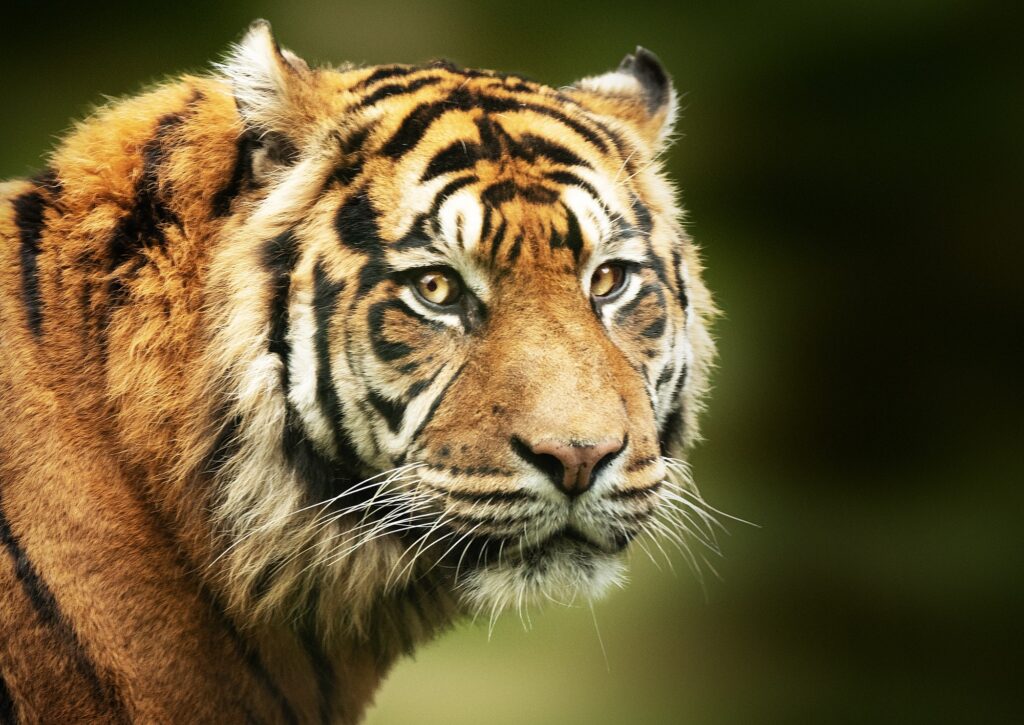Bengal Tiger Symbolism and Meaning

Introduction
The Bengal tiger is a magnificent creature that has captivated humans for centuries. As the national animal of India and Bangladesh, the Bengal tiger holds deep cultural and spiritual meaning in South Asian societies.
This article explores the symbolism and significance behind the Bengal tiger. We’ll examine how it embodies strength, ferocity, beauty, and divine power in Hindu and Buddhist traditions. The article also covers the Bengal tiger’s depiction in art and folklore across many Asian cultures.
Strength and Ferocity

The Bengal tiger is revered for its incredible physical power and predatory instincts. Some key points regarding the Bengal tiger as a symbol of strength include:
- Roams a large territory of up to 60 miles seeking prey
- Weighs up to 500 lbs of pure muscle
- Possesses remarkable agility to chase prey
- Delivers a 1050 psi bite, one of the strongest in the big cats
- Can take down large prey like buffalo and crocodiles
This combination of size, strength, and ferocity has made the Bengal tiger an icon of courage, resilience, and dominance in nature.
The Sundarbans tiger in particular is respected for its ability to thrive in the challenging mangrove habitat – battling tides, swimming between islands for prey, and even drinking saltwater to survive.
Beauty and Nobility
In contrast to its fierce reputation, the Bengal tiger is also admired for its beauty and noble bearing.
- Vivid orange and black stripes are each unique as a fingerprint
- White underbellies and facial markings create distinctive patterns
- Graceful yet powerful gait while walking or running
- Intense golden eyes that reveal its attentive and intelligent nature
These regal aesthetics have inspired the Bengal tiger symbolism of royalty, dignity, and divine blessing in South Asian culture.
Divine Powers
The Bengal tiger is closely linked to spiritual and religious themes in Hindu, Buddhist, and folk legends across Asia:
- Goddess Durga rides a Bengal tiger in Hindu stories, using its fierceness to destroy evil forces and restore balance
- Lord Shiva wears a tiger skin in meditative or dancing postures, evoking the animal’s energy
- The tiger is an avatar of Bodhisattva Manjushri in Tibetan myths
- Chinese legends tell of tigers escorting the souls of dead kings and nobles to the afterlife
As a creature that moves freely between jungle and village spaces in South Asia, the tiger blurs boundaries between human and animal realms and takes on supernatural qualities in local lore.
Cultural Depictions

The Bengal tiger appears extensively in cultural arts and crafts across Asia:
Folk Art Forms
- Patachitra scroll paintings and masks in India
- Batik fabrics and wayang kulit shadow puppets in Indonesia
- Embroidery and lacquerware in China and Japan
Literary Works
- The Jungle Book stories by Rudyard Kipling
- Life of Pi novel by Yann Martel
- Man-Eaters of Kumaon, hunter Jim Corbett’s memoirs
Films
Conservation Symbol
Today, the Bengal tiger is also an international icon for wildlife conservation. With fewer than 2,500 left in the wild1, it represents the importance of protecting endangered species and habitats from poaching, habitat loss, and climate change.
Major conservation groups like the World Wildlife Fund use the Bengal tiger as their central logo. The plight of rare tigers can inspire global efforts to combat biodiversity loss.
FAQ
What is the significance of the Bengal tiger in South Asian culture?
The Bengal tiger is a symbol of strength, ferocity, beauty, and divine power in South Asian culture. It also embodies cultural values such as courage, resilience, nobility, and spirituality. As the national animal of India and Bangladesh, it holds a special place in the region’s art, folklore, and religious narratives.
How does the Bengal tiger demonstrate its physical power?
The Bengal tiger showcases its physical power by roaming territories up to 60 miles, weighing up to 500 lbs of muscle, demonstrating remarkable agility, and delivering a powerful bite of 1050 psi. These attributes enable it to take down large prey such as buffalo and crocodiles, marking it as an apex predator.
In what ways is the Bengal tiger depicted in Asian arts and literature?
The Bengal tiger is depicted in various forms of Asian arts and literature including Patachitra scroll paintings, Batik fabrics, shadow puppets, embroidery, and lacquerware. It also features in literary works like “The Jungle Book,” “Life of Pi,” and Jim Corbett’s “Man-Eaters of Kumaon,” as well as numerous films.
What does the Bengal tiger represent in Hindu and Buddhist traditions?
In Hinduism, the Bengal tiger is associated with deities such as Goddess Durga who rides it to defeat evil forces, and Lord Shiva who wears its skin. In Buddhism, particularly Tibetan myths, the tiger represents the Bodhisattva Manjushri. These associations signify the tiger’s divine and spiritual importance.
Why is the Bengal tiger an international symbol for conservation?
With fewer than 2,500 Bengal tigers left in the wild, they have become a symbol for conservation due to their endangered status. Organizations like the World Wildlife Fund use the tiger as their logo to represent the broader fight against biodiversity loss, habitat destruction, poaching, and climate change impacts.
Conclusion
The Bengal tiger’s combination of strength and beauty has made it a cultural emblem of power, courage, nobility, and spirituality across South and East Asia. As development pressures encroach on its territory, this iconic species has also become a symbol for conservation and environmental awareness around the world. Its future remains uncertain, but the Bengal tiger will likely continue to captivate human imagination and evoke awe of the natural world.





